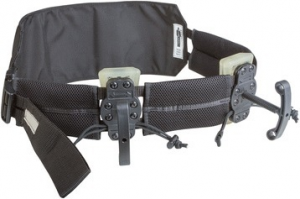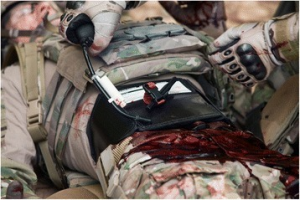Tourniquet (junctional)
Background
- Junctional tourniquets are devices that allow for proximal compression of arterial bleeding and thus control of junctional hemorrhage
- Junctional tourniquets (JTQ) were initially cleared by FDA in 2010 for use in pre-hospital medicine
- Developed because of limitations of traditional extremity tourniquets in controlling hemorrhage between the trunk and limbs. These difficult to access locations were responsible for 20% of preventable deaths by bleeding on the battlefield.
- Testing has shown JTQ to be 75-100% effect in controlling hemorrhage
Properties of a good junctional tourniquet
- Stop bleeding effectively from junction areas such as groin, pelvis, shoulder, or neck
- Compress bleeding from sites where regular TQ cannot be applied
- Safe to use
- Effective for prehospital use
- Small with low profile
- Lightweight
- Low-cost
- Easy to use requiring minimal training
- Applied quickly
- Does not slip on tightening when in use
- Provides easy release of compression
- Easy to reapply
- Long shelf life
Indications
- Junctional hemorrhage not controlled by other means
Contraindications
- None
Application of Junctional Tourniquet
- Application varies by tourniquet design (multiple different types of junctional tourniquet exist)
- Clearly mark tourniquet with time of application
Proper removal in hospital setting
- Loosen the tourniquet while observing wound for bleeding
- If wound now hemostatic, leave pressure off
- If wound continues to bleed, re-apply pressure and prepare for urgent definitive management of bleeding
See Also
External Links
Videos
{{#widget:YouTube|id=1iP0IbO9Gog}}







